By Trinket Canlas Constantino and Adrian Constantino
(all photos taken during the ECQ while adhering to quarantine regulations)
As I write this, it’s been 65 days since Metro Manila was placed under strict community quarantine, and 58 days since the declaration of Enhanced Community Quarantine for the entirety of Luzon Island. At the University, we were all set to have a trial period for online classes for just this eventuality, but the sudden declaration on March 9 still took us by surprise having been declared a few days before the scheduled dry run!
And so, like the other 13 million or so residents of Metro Manila, my husband Adri and I found ourselves stuck at home. What’s a birder to do? The declaration came at the onset of spring migration, always an exciting time for birders, but instead of exploring water bird and raptor hotspots, we found ourselves scanning the skies from inside the four walls of our garden!
Personally, I’ve always enjoyed backyard birding – I feel a kinship to these birds who visit our small green patch and I am personally invested in their welfare! We live in a small residential subdivision in Quezon City, so we are lucky to be surrounded by gardens and trees planted by fellow homeowners. The ECQ has allowed us to become fully immersed in our little personal oasis, something which we could normally only do on weekends (when there were no out-of-town birding trips!)
Our usual star migrant, the Brown Shrike (we lovingly call BBS, Backyard Brown Shrike), failed to establish himself as the dominant backyard bird this season. Bullied by an especially aggressive batch of Philippine Pied Fantails, he relegated himself to the corners, rather than the usual conspicuous high perch overlooking the garden. The last time we heard a Brown Shrike calling was at the first week of May – and now it seems they are all gone. Like clockwork, when our rambutan tree starts blooming, the Brown Shrikes leave, only to return when the rambutan fruit are red and ripe in late August.
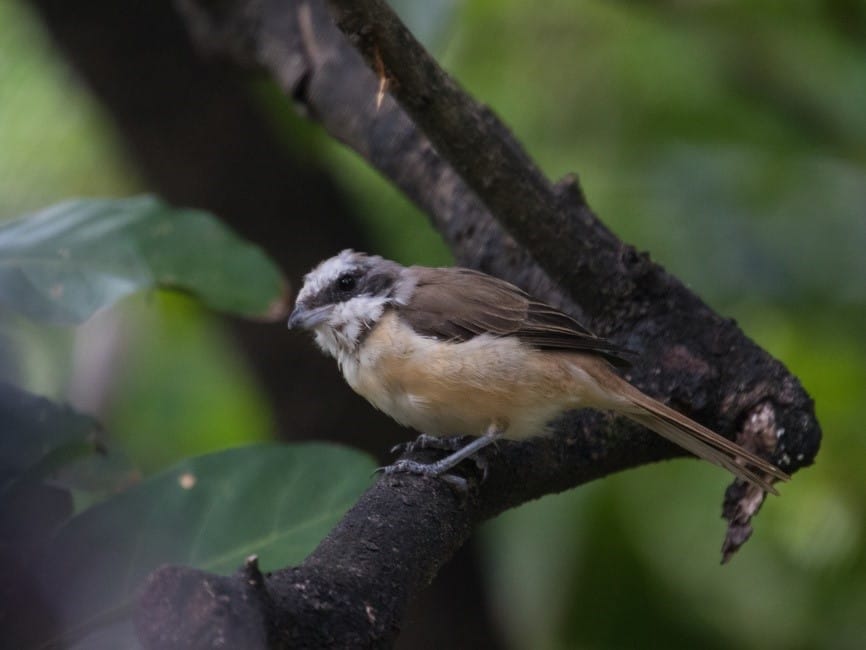
The dominant species, in terms of both number and behavior, of our garden are the Yellow-vented Bulbuls. They are everywhere! They are also the self-declared owners of all our bird baths, shooing away most birds (except of course the Philippine Pied Fantail) as they enjoy their vigorous splashing. I think there was one afternoon when I ignored work completely and just watched them cooling off. These birds definitely enjoy the water! When it started raining in late April, they would be on bare branches on the tops of trees bathing and preening in the rain.
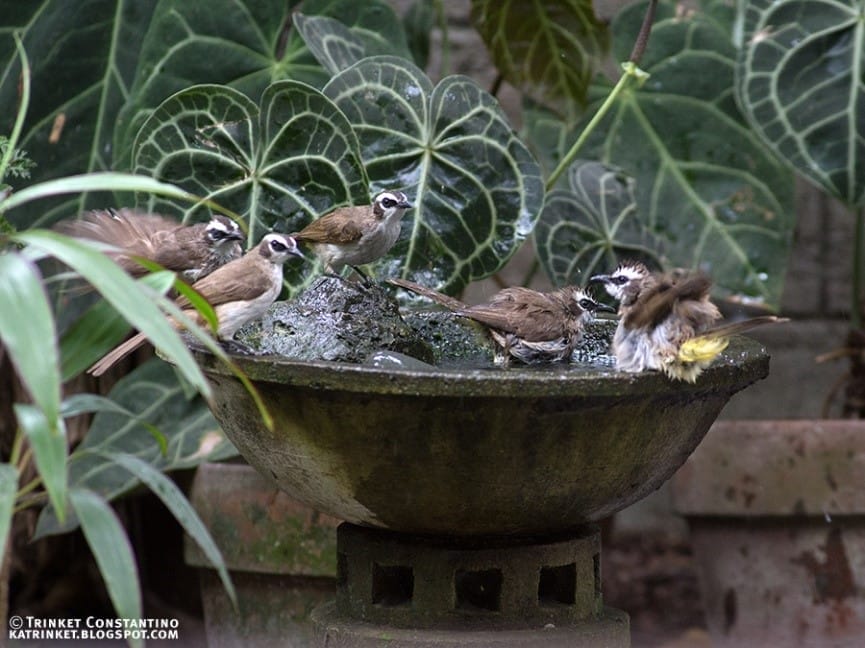

The bird baths aren’t the only YVB attraction in our yard – they enjoy eating all the fruits from our trees too! Mangos, macopa, duhat – none were spared from the tiny bites of the YVBs.


On the other hand, the Philippine Pied Fantails also appreciated the mangos – probably because of all the flies they attracted! The fantails spent half the day patrolling the compost heap (which was overflowing with over ripe mango, mango peels and mango seeds) and the other half bullying their way into the bird bath.
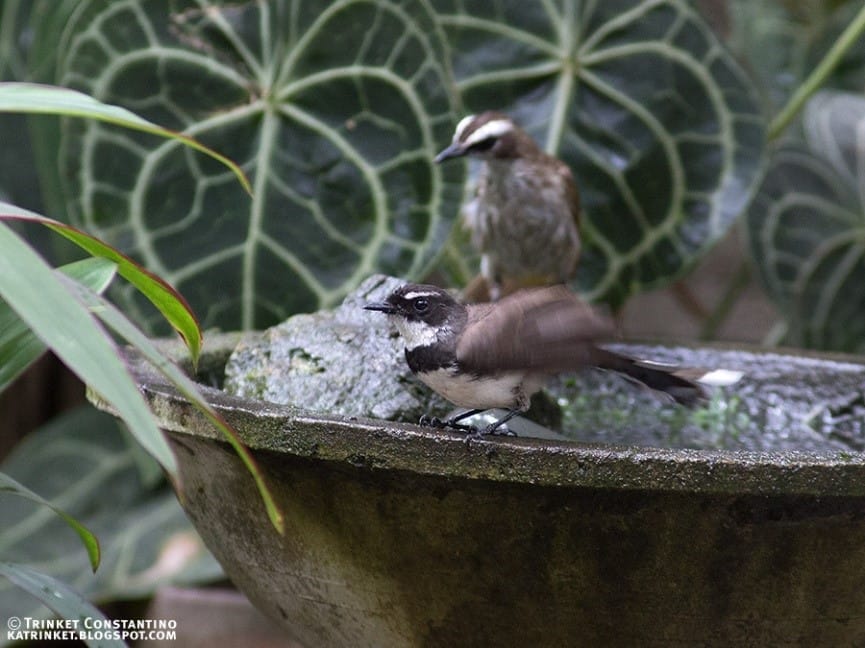
Another attendee at the bird bath is the reticent Zebra Dove. It will walk on the grass, pecking randomly at grass seeds, making its way slowly to the bird bath. Then with one little hop it’s up on the edge of the basin. Most of the time it will just take a quick sip of water, but sometimes it will jump right in and give a good shake of its feathers, drops of water beading on its back feathers.
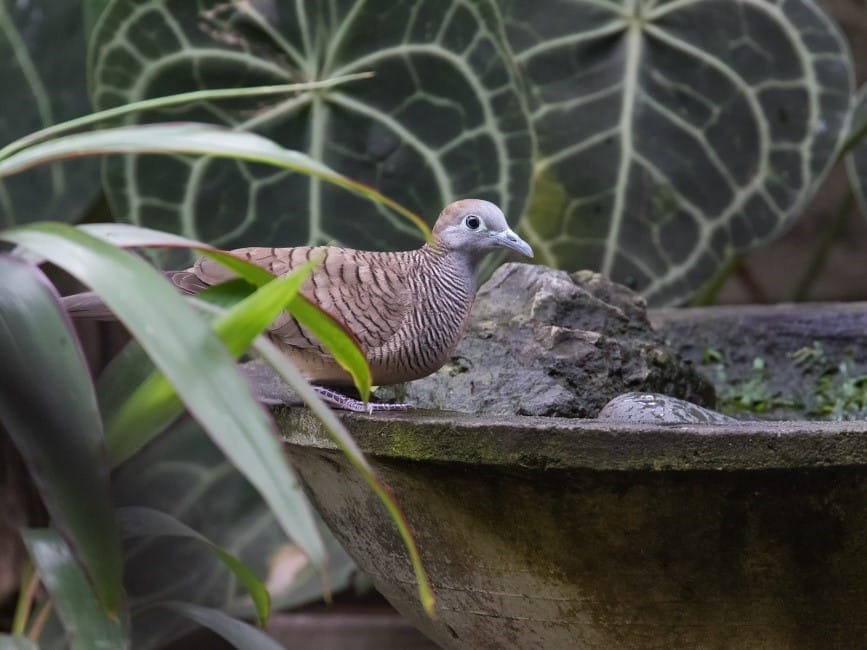
The Black-naped Orioles on the other hand, have never been allowed by the bulbuls to approach the bird bath. We’ve seen them a couple of times perching on a nearby branch, eyeing the bird bath – only to be rudely chased away by a gang of Yellow-vented Bulbuls which are probably half their size!
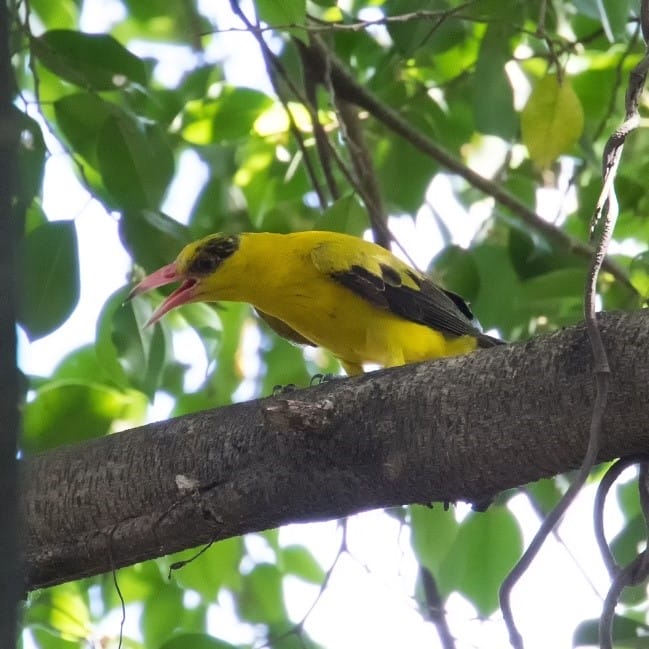
We think the orioles had a nest somewhere nearby at the start of the ECQ since they kept returning to a particular tree down the street. For the first few days, I would hear noisy calls and see an oriole chasing a Large-billed Crow overhead, probably one trying to raid its nest.
Not one to give up easily, the crows must have also attempted to raid a Philippine Pied Fantail nest, only to have the protective pair attack it quite violently, grabbing and clawing at its back and eventually chasing it away.

Another pair of birds we suspect to have a nest in the neighborhood are the Collared Kingfishers. Like the orioles, the kingfishers would pass in front of our house quite regularly, flying from a lot down the street to one of the trees up our street. One would often perch on the flamboyant flame tree or in the narra near our garage, from where it would successfully catch some large insect or small gecko.
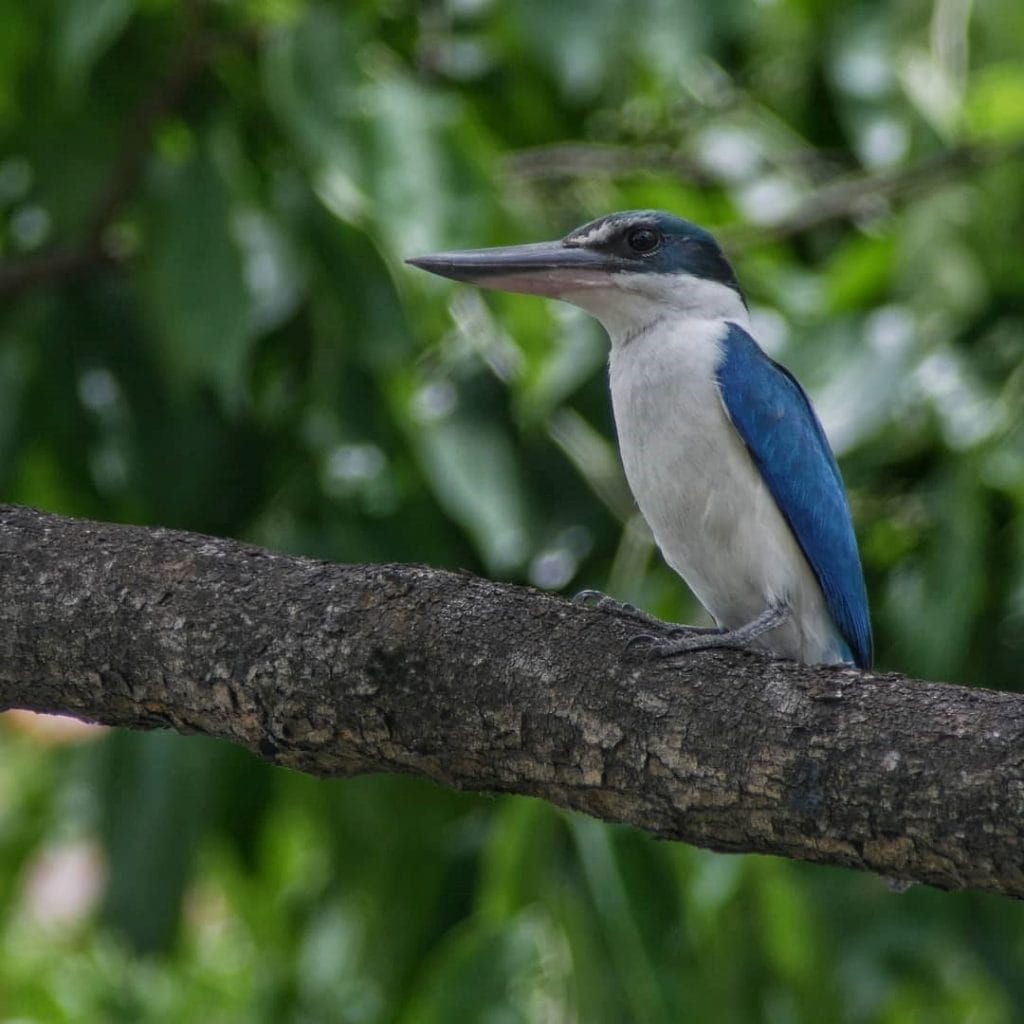
During the ECQ, the Coppersmith Barbets successfully fledged their young one. The nesting hole was in a narra tree, very well hidden behind several branches and leaves. If it were not for the constant coming and going of one of the parents every early evening as I was watering the plants, Adri and I would have not figured it out!
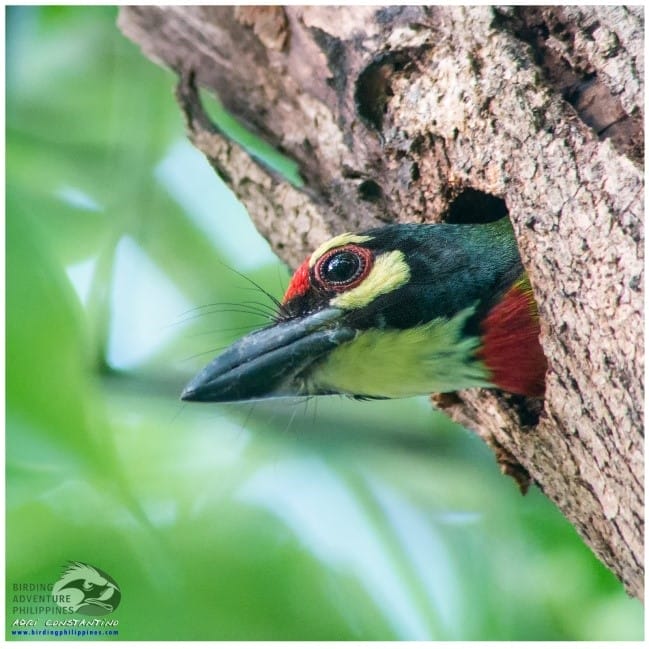

In late March, many of our trees were leafless – the golden shower, the flamboyant flame tree and the narra had shed their leaves and their bare branches made it easy to spot many of the birds perching. The Philippine Pygmy Woodpeckers were always busy digging out grubs and insects from underneath the bark. Now, in May, even if we regularly hear the trilling of the woodpeckers, we can hardly spot them under the thick foliage and blossoms of those trees!

A surprise species was a small flock of Blue-tailed Bee-eaters which visited almost daily during the first week of April. They would usually come either at high noon or during sunset, making their presence felt via their “pirik pirik” calls as they gracefully caught all sorts of flying insects from their tree or electric wire perches.

During sunset, also in early to mid-April, we would see individual or small flocks of egrets, both Little and Cattle, flying overhead. They were 2 of the species which made it to the “flying over only” section of the ECQ yard bird list. Twice I spotted small raptors flying over, though I saw them too late (and they were too fast plus I was too slow) to make a proper ID. Small flocks of Scaly-breasted Munias also fly by regularly, probably heading towards the empty lots in the subdivision where the grass has gone to seed. And of course the Grey-rumped Swiftlets glide by every day.
Although we have not come to the point where we have attempted night birding, the evening bird chorus starts with the croak of Black-crowned Night Herons passing over head. The Philippine Nightjar then calls loudly a few minutes after the sun has completely set. Not quite every day, but several nights a week, a Philippine Scops Owl grunts and growls right outside our bedroom window at around 10pm. Strangely, I also heard the Barred Rails calling (probably from the nearby creek) in the middle of the night maybe twice now.
Other regulars to the garden are the smaller birds: the very vocal Golden-bellied Gerygone would sing at any time of the day and we would enjoy the Olive-backed Sunbird pair sipping nectar from our lobster claw heliconias, our ornamental banana flowers, and our Chinaman’s hat vine. Strangely, the Lowland White-eye flocks were absent, with only a few sightings of one or two birds together.


The normal noisy and visible Asian Glossy Starlings were a bit hard to spot this summer, but one day some young ones enjoyed bathing in the leaves of our duhat tree after a rain shower. The Crested Mynas were also a no show in the garden, but we would be able to spot them singing from the tops of our neighbors’ trees. The Pied Trillers were also their usual active selves, especially in the late afternoons, but they stuck to the high canopy and required a bit of effort to spot and photograph.
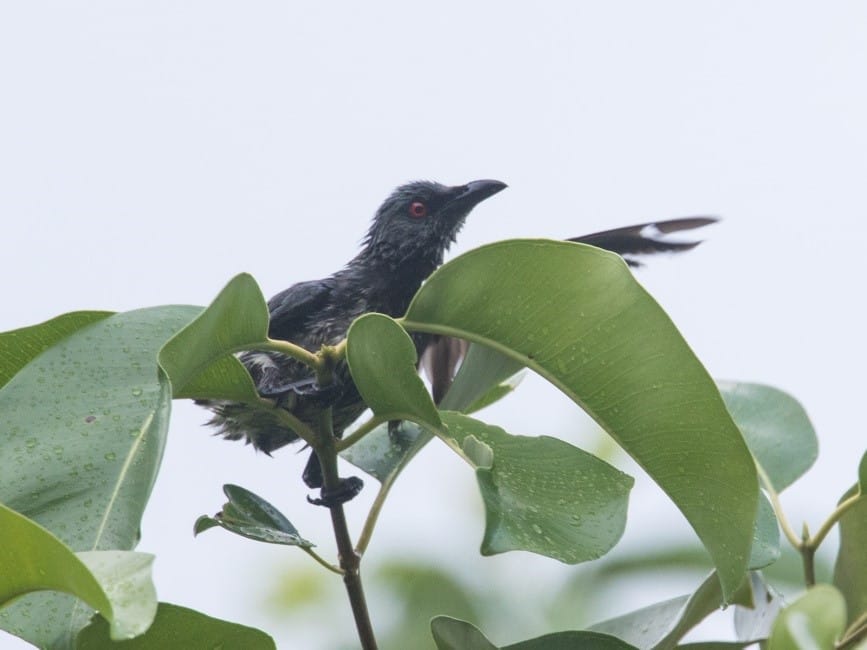
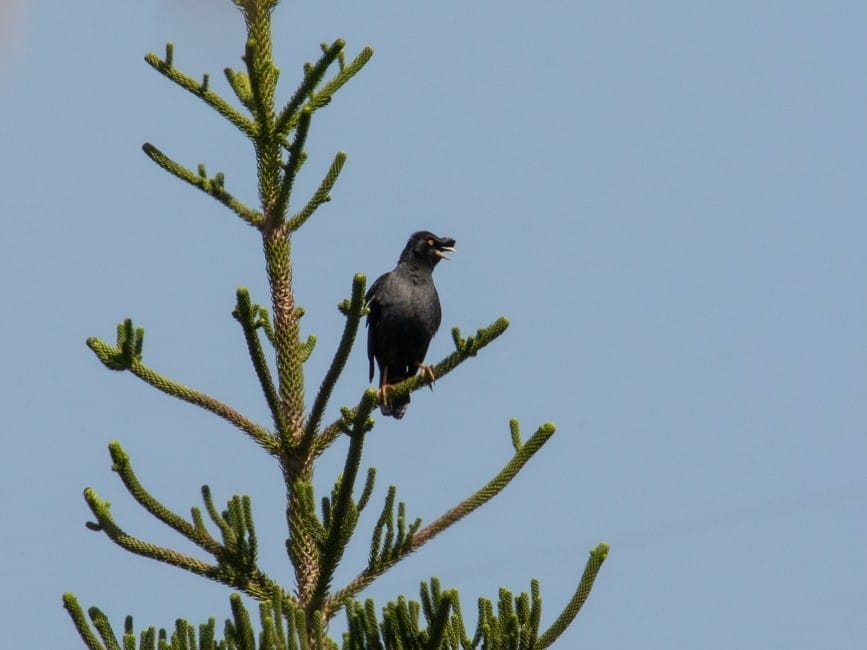
My favorite birds for the entire time are no doubt the Colasisis! They are an absolute delight to watch and we were even able to document a few interesting behaviors. It is quite obvious when they are present in the garden, their loud, high-pitched calls (which we could hear even from inside the house) giving them away. But spotting them is another matter – these chunky little green birds can look pretty much like leaves, and even while perched move quite slowly, that we really had to look hard to spot them! Usually, we spot them just as they dart off, giving a sharp call as they do. They would be eating fruits and flowers of the various trees around.
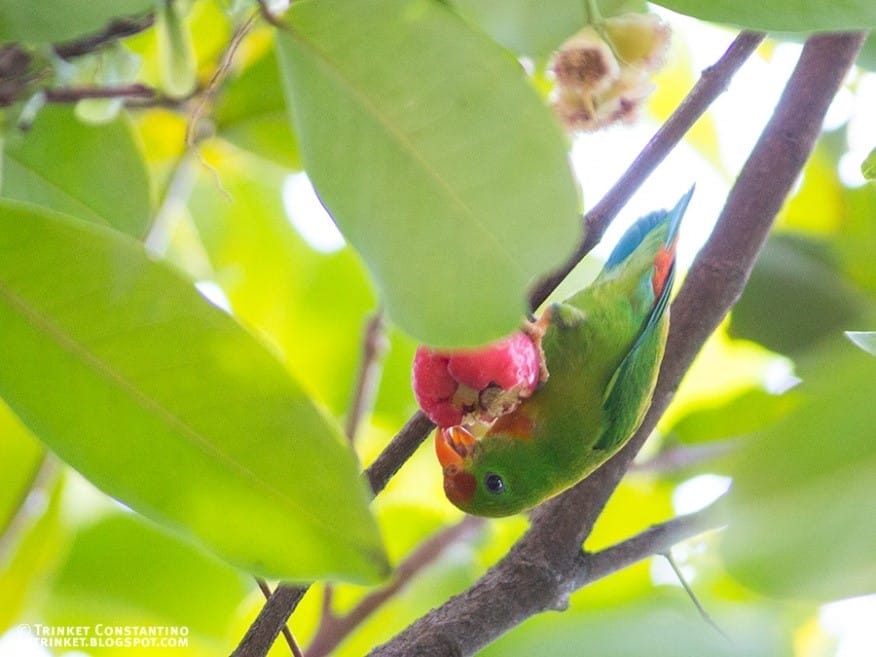
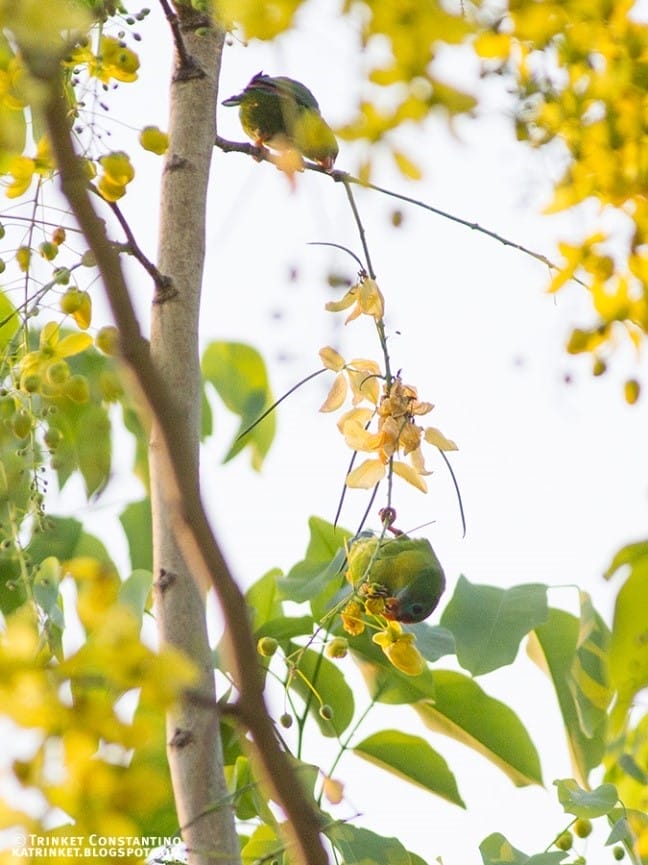
The first time during the ECQ (in late March) we had attempted to look for them, Adri spotted a female in the duhat tree. Thinking that it was eating at the abundant flowers, Adri got his camera out for documentation. To his surprise, it wasn’t eating, but ripping out strips of leaves and tucking them under her feathers! We knew this was a behavior of parrots during nesting season, the leaves to be used to line the cavity nest, but it was the first time we had witnessed it!
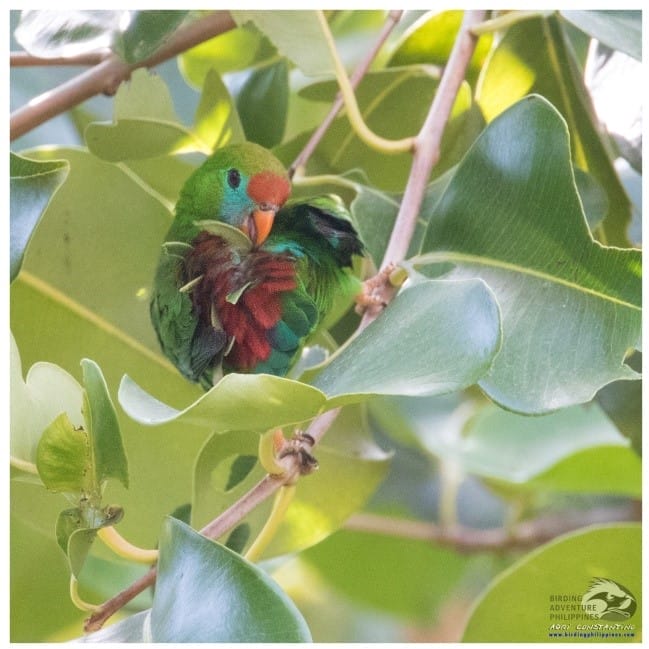
We were able to observe this again in early May – this time we had a pair going through some bonding rituals in our macopa tree. The male would offer the female some food, which she would accept. This would be followed by a bit of violent breast pecking, then finally by allopreening with the male and female perched side by side “kissing” and cleaning each other’s’ feathers. Eventually, the female allowed the male to hop on her back to do the deed… three times! How cute was that?
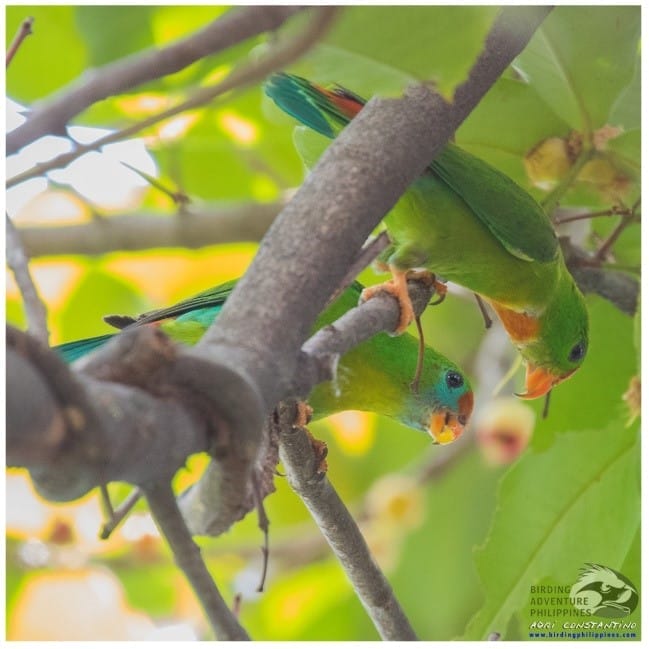
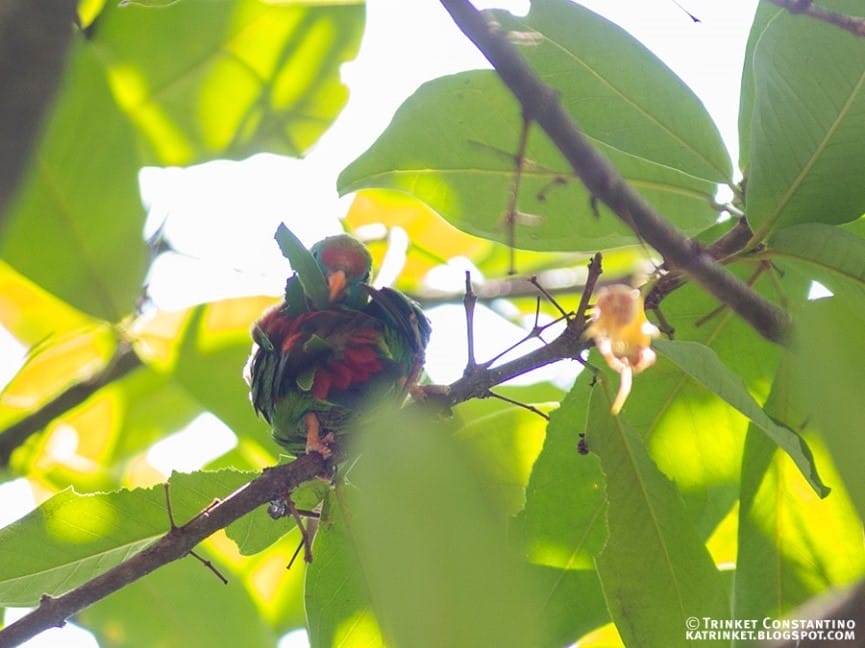
Between these two observations, we were also able to observe a young Colasisi being fed by its parent, once at the mango tree and another time at the macopa tree. Now we wonder how many Colasisi pairs we have nearby and visiting our garden! Are these all the same prolific birds or several pairs and families?
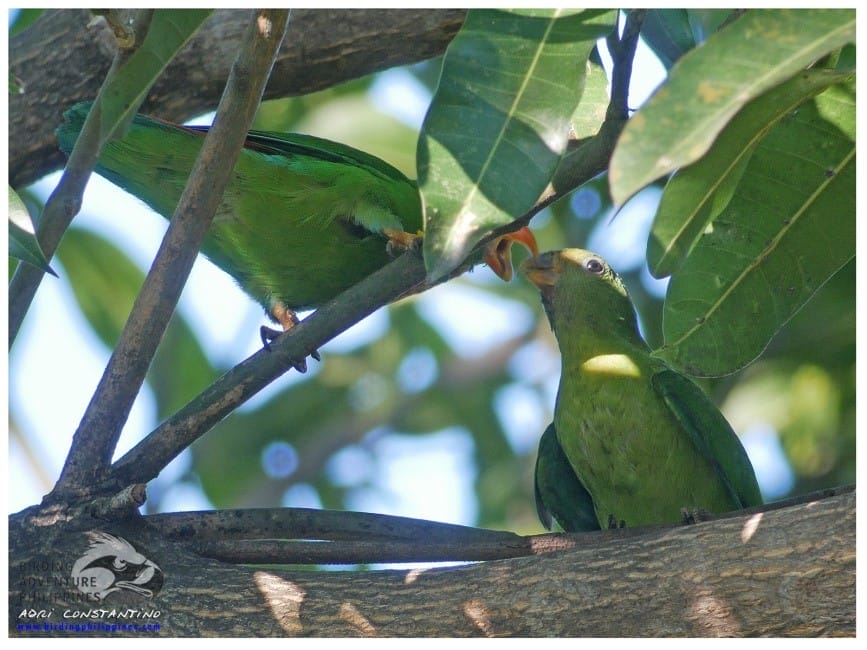
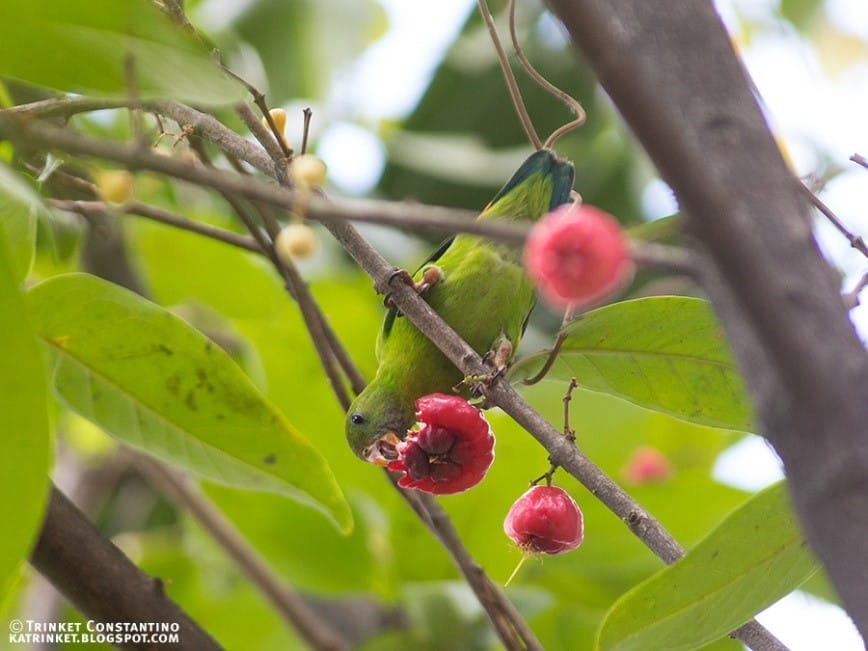
All in all, our ECQ yard list has so far reached 31 species (we have a total of around 50+ species for our overall yard list). Although there are no surprises on the list for an urban garden, we are happy and grateful that we have this little piece of green which is frequented by these city-dwelling birds. They have definitely made our forced time at home and away from work easier to bear, and have given us relief from the troubling news of the COVID-19 pandemic affecting the whole world.
ECQ YARD BIRDLIST
1. Black-crowned Night Heron Nycticorax nycticorax
2. Eastern Cattle Egret Bubulcus coromandus
3. Little Egret Egretta garzetta
4. Raptor sp. Accipitridae sp.
5. Barred Rail Gallirallus torquatus
6. Zebra Dove Geopelia striata
7. Philippine Hanging Parrot/Colasisi Loriculus philippensis
8. Philippine Scops Owl Otus megalotis
9. Philippine Nightjar Caprimulgus marginata
10. Grey-rumped Swiftlet Collocalia esculenta
11. Pygmy Swiftlet Collocalia troglodytes
12. House Swift Apus nipalensis
13. Collared Kingfisher Todiramphus chloris
14. Blue-tailed Bee-eater Merops philippinus
15. Coppersmith Barbet Megalaima haemacephala
16. Philippine Pygmy Woodpecker Dendrocopos maculatus
17. Golden-bellied Gerygone Gerygone sulphurea
18. Pied Triller Lalage nigra
19. Brown Shrike Lanius cristatus
20. Black-naped Oriole Oriolus chinensis
21. Philippine Pied Fantail Rhipidura nigritorquis
22. Large-billed Crow Corvus macrorhynchos
23. Yellow-vented Bulbul Pycnonotus goiavier
24. Pacific Swallow Hirundo tahitica
25. Lowland White-eye Zosterops meyeni
26. Asian Glossy Starling Aplonis panayensis
27. Crested Myna Acridotheres cristatellus
28. Red-keeled Flowerpecker Dicaeum australe
29. Olive-backed Sunbird Cinnyris jugularis
30. Eurasian Tree Sparrow Passer montanus 31. Scaly-breasted Munia Lonchura punctulata

Great read, Trinket. My siblings and I grew up with just little encounters witk Colasisi in our small guarden. So many species of birds we were not aware of. So glad your mom gifted us with your 2020 bird calendar.
Pingback:Birder Profile: Spreading and Catching the Bird Fever with Karen Ochavo – Wild Bird Club of the Philippines